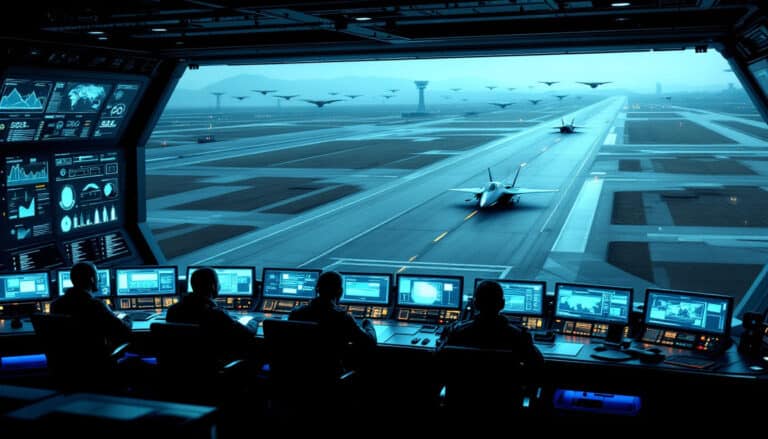In 2023, a historic pact was signed between the United States and the Philippines. This new agreement opens access to several military bases in the Philippine archipelago, a first in several decades. Although the pact does not allow for the permanent deployment of American troops in the Philippines, these newly accessible bases border the South China Sea.
Plans are already underway to strengthen these bases. The coming year will undoubtedly see an expansion of cooperation between Washington and Manila, as well as the strengthening of their respective navies to counter China’s claims in this strategic region. Unlike the massive Navy presence in Subic Bay which ended in 1992, this agreement reflects a significant change driven primarily by maritime interests.

In 2023, a historic agreement was signed between the United States and the Philippines, marking a new era of military and strategic cooperation. This agreement opens access to several strategically located Philippine military bases to American forces for the first time in decades. As we approach 2024, this intensification of the partnership promises to redefine regional dynamics, particularly in response to increasing tensions in the South China Sea.
Table des matières
Togglewhich bases will be accessible to American forces in 2024?
The 2023 agreement provides for the opening of several strategically located bases in the Philippine archipelago. Some of these are near the South China Sea, a crucial area due to competing territorial claims. Although this agreement does not allow for the permanent stationing of American troops, it offers increased flexibility for temporary deployments and joint exercises. These bases will serve as essential support points for naval and air operations, thereby reinforcing the American presence in the region.
what are the strategic implications in the South China Sea?
The South China Sea is an area rich in natural resources and a key maritime route for global trade. The United States and the Philippines view this agreement as a means to counter China’s expansionist claims. By reinforcing their military presence, both nations seek to ensure freedom of navigation and protect maritime routes against any attempt at unilateral dominance. This initiative is also a clear message to other countries in the region, highlighting the commitment of the United States to its Asian allies.
how are the two nations preparing their naval forces?
In preparation for 2024, the United States and the Philippines are intensifying their efforts to modernize and coordinate their naval forces. Plans are in place to strengthen the newly accessible bases with modern infrastructure and advanced equipment. Additionally, regular joint exercises will be organized to improve interoperability and rapid response capability to potential threats. This meticulous preparation aims to create a cohesive and effective naval force capable of addressing current and future security challenges.
what role does technology play in this strengthened partnership?
Technology plays a central role in intensifying the partnership between the United States and the Philippines. Innovations such as increased use of cybersecurity systems and sophisticated surveillance are integrated into defense strategies. According to an article from DefTechClub, the future of combat in cyberspace requires close collaboration between the two nations to protect critical infrastructures and prevent potential cyberattacks. Moreover, joint initiatives in research and development are being established to ensure ongoing military capability innovation.
how does infrastructure modernization support this partnership?
The modernization of military infrastructure is a key pillar of this strengthened agreement. For instance, Airbus has secured a contract worth $13 billion to modernize and maintain A330 tanker aircraft, which will play a crucial role in providing logistical support for American operations in the region. This modernization not only improves operational efficiency but also ensures that deployed forces have access to the best available equipment.
what are the energy challenges related to this military cooperation?
An often overlooked but crucial aspect of this intensification of partnership is energy production. According to a report from DefTechClub, challenges related to energy production could threaten the stability and efficiency of military initiatives. Ensuring a stable and sustainable energy supply is imperative to support ongoing military operations. Therefore, both nations are investing in innovative energy solutions to overcome these obstacles and ensure a robust energy base for their respective forces.
what impact does this agreement have on geopolitical relations in the Asia-Pacific?
The 2023 agreement between the United States and the Philippines has significant repercussions on geopolitical relations in the Asia-Pacific. By strengthening their alliance, the two countries set a precedent for other nations in the region looking to counter China’s growing influence. This dynamic also encourages other potential allies to consider similar partnerships, thereby creating a network of strategic support around the United States. As a result, this agreement contributes to redefining power balances in the region, fostering greater stability and collective security.
what role does space exploration play in this strategic partnership?
Space exploration plays an innovative role in strengthening the partnership between the United States and the Philippines. According to DefTechClub, advancements in space enable better strategic surveillance and communication, as well as the development of advanced defense technologies. By collaborating on space projects, both nations not only enhance their military capabilities but also strengthen their research and development skills, paving the way for future innovations that will benefit both national security and scientific initiatives.
how do acquisition reforms support this partnership?
Acquisition reforms play a crucial role in solidifying the partnership between the United States and the Philippines. According to DefTechClub, essential reforms in the acquisition of military technologies and equipment ensure better efficiency and rapid adaptation to the evolving needs of both nations. These reforms facilitate the integration of new technologies, reduce procurement timelines, and optimize available resources, thus allowing for a more agile and coordinated response to regional security challenges.
what are the expectations for the future of the US-Philippine partnership?
Looking towards 2024 and beyond, expectations for the US-Philippine partnership are high. Both nations aim to deepen their collaboration across various areas, ranging from defense and security to technology and innovation. Plans include not only expanding military capabilities but also increasing cooperation in cybersecurity, energy, and space exploration. Furthermore, these joint efforts aim to promote regional stability, strengthen strategic alliances, and ensure a coherent response to emerging threats. This strengthened partnership is seen as an essential pillar for maintaining the balance of power in the Asia-Pacific and ensuring long-term peace and prosperity.
how does this agreement influence economic relations between the two nations?
The military agreement between the United States and the Philippines also has significant economic implications. Increased access to American military bases stimulates investments in local infrastructure, creating economic opportunities for the Philippines. Moreover, technological collaboration and military contracts, like the one awarded to Airbus, strengthen economic ties between the two nations. This symbiotic relationship fosters mutual economic growth while consolidating the strategic alliances necessary to address contemporary geopolitical challenges.
what is the international community’s reaction to this strengthened partnership?
The international community is closely watching the intensification of the partnership between the United States and the Philippines. While some allies welcome this move as a way to stabilize the region, others, particularly China, express concerns regarding the balance of power in the Asia-Pacific. Neighboring nations, such as Japan and Australia, see this alliance as an opportunity to enhance regional security and are considering similar collaborations. However, critical voices highlight the potential risks of military escalation and call for diplomatic dialogue to prevent any deterioration of international relations. In this context, the US-Philippine agreement is seen as a key piece in the geopolitical puzzle, influencing strategies and alliances on a global scale.
#>
























